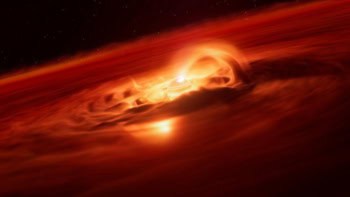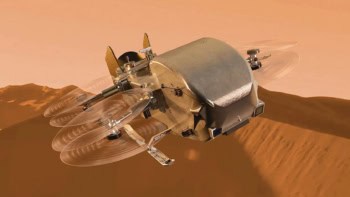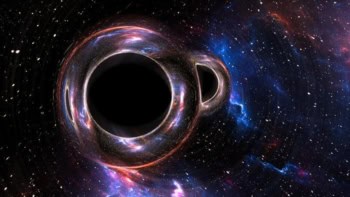The Crowded Universe
Alan Boss
2009 Basic Books £15.99/$26.00 256pp

From zero to 350 in less than 14 years — this is the impressive track record of astronomers searching for planets orbiting other suns. In 1995 when two Swiss astronomers discovered that the star 51 Pegasi has a companion with about half the mass of Jupiter, a new field of astronomy was born: the science of extrasolar planets. Since then, the count of such planets has been increasing at an accelerating pace, passing 50 in 2001 and 100 just two years later; 14 exoplanets have been found so far in 2009 alone. However, it is not only quantity that counts. The observational techniques employed for such planet searches have been refined continuously, in order to become sensitive to bodies with lower and lower masses. In addition to large gas giants, several planets only five times as massive as the Earth are now known to exist.
In The Crowded Universe, Alan Boss from the Carnegie Institution in Washington, DC, takes us along to scientific conferences and press briefings where the exciting and sometimes perplexing discoveries of extrasolar planets are announced; to seminars where theories of their formation are debated; and to committee meetings where strategies are charted, research budgets allocated or withdrawn, and missions approved or cancelled. All these efforts have one final goal in mind: to find our cosmic neighbours.
One might assume that such committee meetings are a dull affair, but as Boss makes clear, this is a field that has known its share of controversy and unexpected twists and turns. While many new planets were being added to the official and semi-official lists keeping track of them, our own solar system ironically lost one of its own: delegates at the 2006 general assembly of the International Astronomical Union in Prague voted to demote Pluto from its status as a planet — much to the chagrin of scientists involved in a mission that had been launched a few months earlier with the aim of visiting Pluto and its moon Charon in 2015. In fact, Pluto’s reclassification had become necessary because several objects larger than Pluto had been discovered in the outer reaches of the solar system; these were assigned to the newly created category of “dwarf planet”, along with Pluto and the largest asteroid Ceres.
Boss chronicles these developments meticulously, and his book reads almost like a diary. If you have read Boss’s earlier book Looking for Earths, then you will be familiar with this style, and have your own opinion of it. I myself like his approach, because he succeeds in interweaving reports of historical events and personal stories with explanations of physical concepts and descriptions of observing methods. There are no formulas in the new book, and all explanations are at a level that should be easily accessible to readers without any training in physics or astronomy. However, the anecdotes, accounts of press events and details from NASA committee meetings will probably be most interesting to those who are familiar with the field and may even know some of the participants personally. For these readers, Boss’s book will provide a new perspective on events that may still be fresh in their own memories.
While Boss mostly takes the viewpoint of a well-informed but dispassionate reporter, his stance becomes more personal when it comes to subjects in which he has been directly involved. One such topic is the question of the mechanism by which the giant planets formed in the disk of gas and dust that surrounded the Sun when our solar system was still in its infancy. Most experts believe that the first step in this process was the agglomeration of solid material to a core with about 10 Earth masses, followed by a second step in which this core swept up a huge amount of gas. Boss, on the other hand, is the most prominent proponent of the main alternative theory, which holds that the giant planets formed relatively quickly in one step through the collapse of a clump of gas, triggered by an instability in the disk. Not surprisingly, the arguments in favour of this theory are given broad room in The Crowded Universe, although the alternate view is not neglected.
The other topic that seems near and dear to Boss’s heart is space policy, and the way that financial constraints and decisions driven by fiscal considerations influence the progress of science. In the book’s prologue, Boss declares that “a new space race is under way”. This is the race to find Earth-like planets — that is, planets with properties that may allow them to support life. The existence of a solid surface and liquid water (or perhaps an ocean covering the whole surface) are generally considered necessary for life to develop and to thrive. This in turn requires a relatively small planet with moderate temperatures — so that it does not attract a thick gas envelope like that of Jupiter, and so that the water does not completely evaporate. Two satellite observatories are now in orbit that can find such planets: NASA’s Kepler mission and CoRoT, which is led by France and involves a number of other European countries plus Brazil.
CoRoT and Kepler both look for the slight dimming of a star that occurs when a planet transits in front of it (see Physics World March p8). Such transits occur only if you happen to be located almost in the orbital plane of the planet; therefore only a small fraction of all planets are observable in this way. Together with the fact that CoRoT and Kepler can observe only a small fraction of the sky, these missions will therefore not see the planets that are closest to us, but rather a set of planets that are several hundred light-years away. In other words, the planets that CoRoT and Kepler discover will be unsuitable for closer study with advanced space telescopes — we can infer that such planets could support life, but for the foreseeable future we will not have any means to find out whether they actually do.
For many years, scientists and engineers at NASA’s Jet Propulsion Laboratory and across the US have been seeking to remedy this problem by designing the Space Interferometry Mission (SIM), which could actually find the habitable planets closest to us. SIM would accurately follow the paths of all nearby Sun-like stars on the sky; tiny wiggles in their motions would then betray the presence of Earth-like planets pulling on their parent stars as they orbit the common centre of mass. We could then obtain spectra of the atmospheres of these planets with specialized space telescopes, and thus find out whether they contain methane and oxygen — the telltale signatures of life on Earth.
Boss gives a vivid account of the ups and downs that have occurred in NASA’s decisions about funding for SIM — the downs triggered by funding shortfalls in other parts of NASA’s portfolio more than anything else. So, sadly, in spite of much scientific progress in our quest to discover planets that are similar to our own, and of the amazing technological achievements in the development of SIM, we seem further away from the possibility of finding life on other planets now than we were a few years ago.
The blurb on the book’s inside cover claims that “The Crowded Universe will finally answer the age-old question: are we alone?”. This is greatly exaggerated, as the book makes abundantly clear: we have only just started to scratch the surface of the exciting subject that the science of extrasolar planets has become. Fortunately for all of us working in the field, many questions still remain to be answered, and we will certainly be in for many surprises if we continue our quest to find out whether the universe is indeed crowded, or empty after all.



